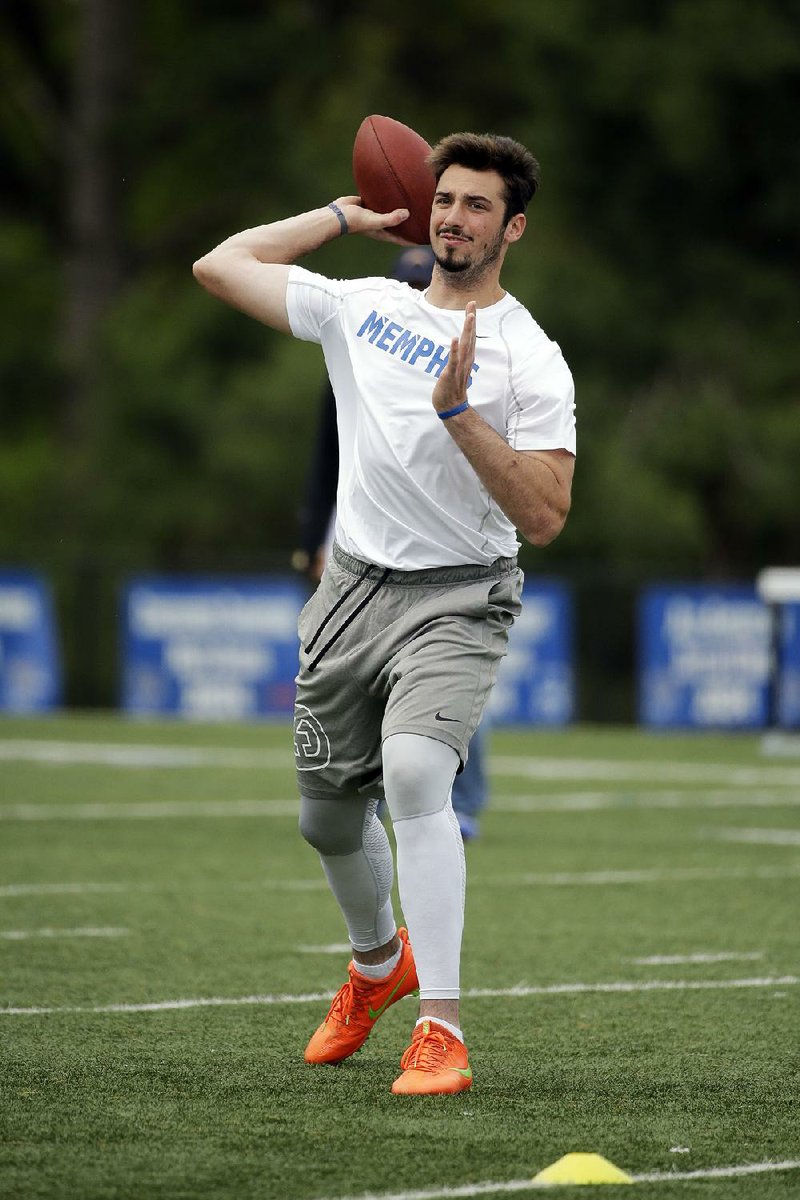So, you have a quarterback who played in the spread and never took a snap at the line of scrimmage. And receivers who don't understand route trees.
Not to mention linebackers who rarely played in tight quarters. And blockers who have not gotten into a three-point stance since high school. Or junior high.
Now turn them loose in the NFL? Good luck.
The way the spread offense has taken over college football has made the NFL Draft even more of a crapshoot. In the past, pro scouts had seen college prospects perform in something similar to the NFL. Nowadays, other than rarities such as Stanford's offense or Alabama's defense, few schools are using formations or styles similar to what the players will face in the NFL.
"At the core, you want an athletic guy, a smart guy, a tough guy, and a guy that can pick up what you're teaching him, which is where the value of a personal workout is," Buccaneers General Manager Jason Licht said. "You can learn a lot ... an hour on the field, three hours in the classroom with a guy. Some guys just can't pick it up, some guys can. Some guys are playing without a playbook in college. Some guys don't know protections. It makes it a little more challenging, but it makes it a little more fun, too."
Quarterbacks who have worked mostly from the pistol or shotgun -- such as Memphis' Paxton Lynch, who is expected to be one of the top passers picked -- have to learn a whole new way to play. Offensive linemen who haven't done much traditional run blocking have to learn the skill against NFL defenders much stronger than they faced in college.
Vikings General Manager Rick Spielman notes how difficult it is "to teach them how to get into a three-point stance, how to run block" because of the restrictions on practice time under the labor agreement.
Giants OL coach Mike Solari said there is "a tremendous learning curve as far as technique and fundamentals for young offensive linemen coming into the NFL. There is always a sense of urgency to get them up to speed."
One way of doing so, even before they get to the combine or the draft -- which starts Thursday -- is at all-star games. The Senior Bowl in Mobile, Ala., features two NFL coaching staffs working with invited players and using pro-style schemes. Players get a week's worth of practices in front of dozens of scouts.
For some collegians, it's the first opportunity to perform in a pro-style system. It can get them on the draft radar or improve their stock.
"Being at the Senior Bowl can show not only if players have the ability to translate from A to B, but also gives them a head start once they get to a minicamp," said Phil Savage, a former NFL general manager and now executive director of the Senior Bowl. "I always feel the 110 guys who come to Mobile not only get the transition opportunity on the field, but get some of those personal interviews under their belt. And they at least have an idea what it is going to be like working with a pro coaching staff."
As more college coaches have gone with the spread, certain positions have morphed. Tight ends either are blockers or quasi-wideouts, rarely handling both duties as they may have to in the NFL. Fullbacks are almost nonexistent. Linemen just backpedal and pass block.
Arkansas tight end Hunter Henry is seen as a high pick because he blocked and ran routes in a pro system. Michigan State tackle Jack Conklin also showed he can run block and pass block, moving him ahead of some spread players.
Patriots player personnel director Nick Caserio notes some teams "throw the ball 75 times a game, and they've never run blocked in their entire life."
But defensive backs have prospered from the proliferation of wide-open offenses.
"The ball is in the air more. They are learning to tackle out more in the open grass," Savage said. "It is a tough job for those college DBs, playing against three and four receivers every snap. Colleges run two receivers deep on one side, they exit the field, and two fresh receivers are basically doing the same thing on the next play. The DB is the same guy. He's learning from that."
Sports on 04/23/2016

